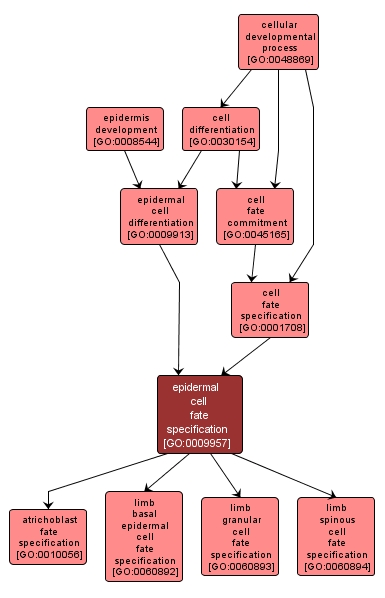GO TERM SUMMARY
|
| Name: |
epidermal cell fate specification |
| Acc: |
GO:0009957 |
| Aspect: |
Biological Process |
| Desc: |
The process by which a cell becomes capable of differentiating autonomously into an epidermal cell in an environment that is neutral with respect to the developmental pathway; upon specification, the cell fate can be reversed. |
Synonyms:
- hypodermal cell fate specification
- GO:0043356
|
|

|
INTERACTIVE GO GRAPH
|














